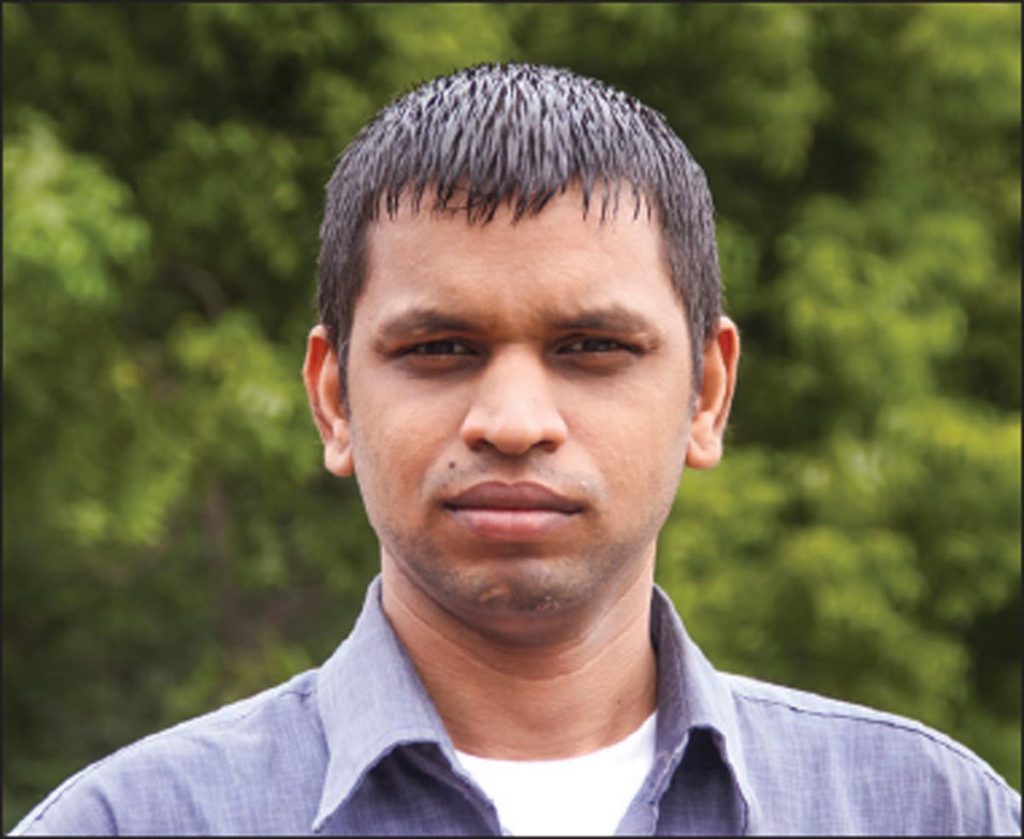A photographic essay of the kolam contest held during Mylapore’s eighteenth annual Sundaram Finance Cultural festival
By Balakumar Muthu
RECENTLY I VISITED THE PULLI KOLAM contest in Mylapore, Chennai, as part of the Sundaram Finance’s Mylapore 2020 Cultural Festival, which celebrates the arts, food, craft, games, drama, dance and religious traditions of Chennai’s most iconic neighborhood. This year’s festival took place from January 9 to 12, in and around the famed Kapaleeshwarar Temple. The festival included 30 cultural contests, activities, and exhibitions with some 400 artists contributing.
The major attraction of the Mylapore Festival is the two-day pulli kolam and rangoli contest at North Mada Street. The contest is a visual treat to observers, as they scan over different vibrant and creative designs, and it’s a true delight for participants from all the age groups.

The pulli kolam is a ritualistic art form carried forth mostly by women of South Indian households. The word kolam in Tamil means “beauty” and it is a symbol of sanctity, success and positivity. The curved, looping lines of traditional pulli kolams are a maze of knots that often begin and end at the same point. These designs require great concentration and memory. Many women of South India rise early each day to bless their homes by making a kolam design at the entry. Those who have been keeping this tradition alive have built upon the past by adding small, innovative changes in their patterns to create something new every day.

The geometric pulli kolam has an inherent mathematical foundation and begins with a grid of dots around which lines are looped following three traditional rules: all line orbits should be closed, all dots should be circumscribed, and two line segments cannot overlap over a finite length. While there are various other types, like chikku, kambi and neli kolams, they all share intertwining patterns that are dynamic and thoughtfully calculated. The idea is that these geometric shapes reflect certain mental energies that bless and uplift our homes.
Extreme & Auspicious

Most kolams are colorful, like the massive and elaborate one above drawn by a young artist in Mumbai during Gudi Padwa, a festival that marks the traditional new year in North India. It welcomes the Chitra month and holds utmost prominence in a Maharashtrian household. It is celebrated with decorating the floor with rangoli designs, as shown above in this joyous community sharing. Rangoli, called kolam in South India, is one of the most popular forms of decorating the house on any auspicious Hindu festival. Since Gudi Padwa has no particular motif, the people celebrating it take artistic liberty, employing a variety of motifs in whichever combination they like.
If you would like to try your hand at making kolams, a good place to start would be to search YouTube for some “how-to” videos. Here is one that demonstrates several beginner-friendly designs: youtu.be/682RhOPHSp8

Balakumar is the editor and photographer of casualwalker.com. He is an entrepreneur, web developer, software consultant, travel photographer and hatha yoga practitioner
